Although buying cheaper conventional produce is tempting, paying extra for organic food does matter, and can lower the amount of toxins you and your family eat. Here are the top reasons why we pay extra for organic produce.
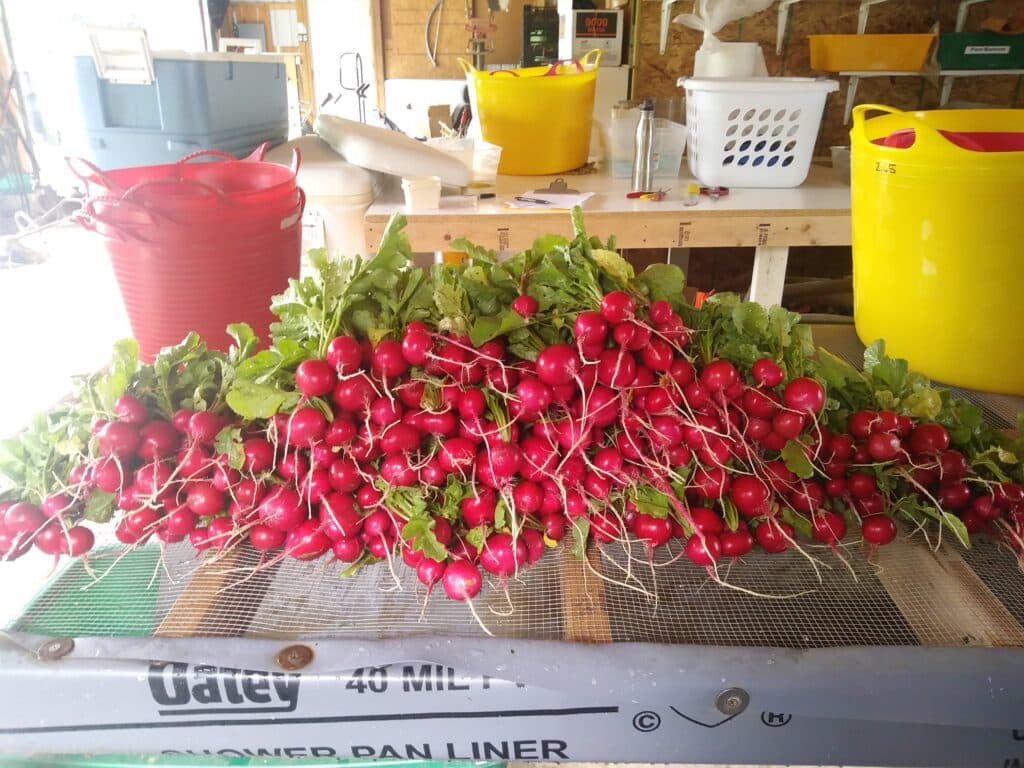
Table of Contents
- What You’re Really Paying for with Organic Food
- Buying Organic Supports Sustainable Land Use
- Organic Food Has Higher Nutrient Levels
- Organic Food Has Lower Levels of Toxic Metals
- Organic Food is Easier to Buy Local (and Helps Your Community)
- Much More Variety
- No Pesticide Residues
- Can You Buy “Natural” Food Instead or Organic?
- Choose Organic When You Can—A Little Is Better Than Nothing!
Thanks to inflation and an impending recession, food dollars must go further than ever. Many shoppers are left wondering where they can trim the fat from their dinner budgets, which often means deciding whether to buy organic or conventional produce.
See also: Why organic food costs more
At a glance, the two options in the store don’t seem so different. Should you really splurge an average of 21% more on the heirloom tomatoes and other organic vegetables? I’ve worked on numerous organic farms and have grown my own food organically for years, and my answer is a resounding yes. There is enough difference between organic and conventionally-grown produce that it’s almost always worth paying more for it. Here’s why.
Free eBook: Simple Steps to a Greener Home
Concerned about climate change? Learn actionable tips for making each room in your home greener.
"*" indicates required fields

What You’re Really Paying for with Organic Food
While “organic” is a relatively new concept, the growing style is anything but. Organic agriculture has been the norm throughout human history. Only in the past 120 years did the invention of GMOs, synthetic fertilizers, and pesticides change the equation. And since that time, the process of growing food has changed almost beyond recognition.
Organic farming is a pushback against these changes and an attempt to return to our collective agricultural roots. USDA-organic certification began in 2002 as a way for customers to identify products grown organically. Qualifying farms must meet strict production standards and operate in ways that improve soil and promote the health of both people and livestock. This means organic farms are prohibited from using artificial fertilizers, most synthetic pesticides, genetic engineering, antibiotics, growth hormones for farm animals, and more.
This all sounds great in theory, but the benefits of organic produce come at a price premium. Here are six reasons why it’s still worth it.
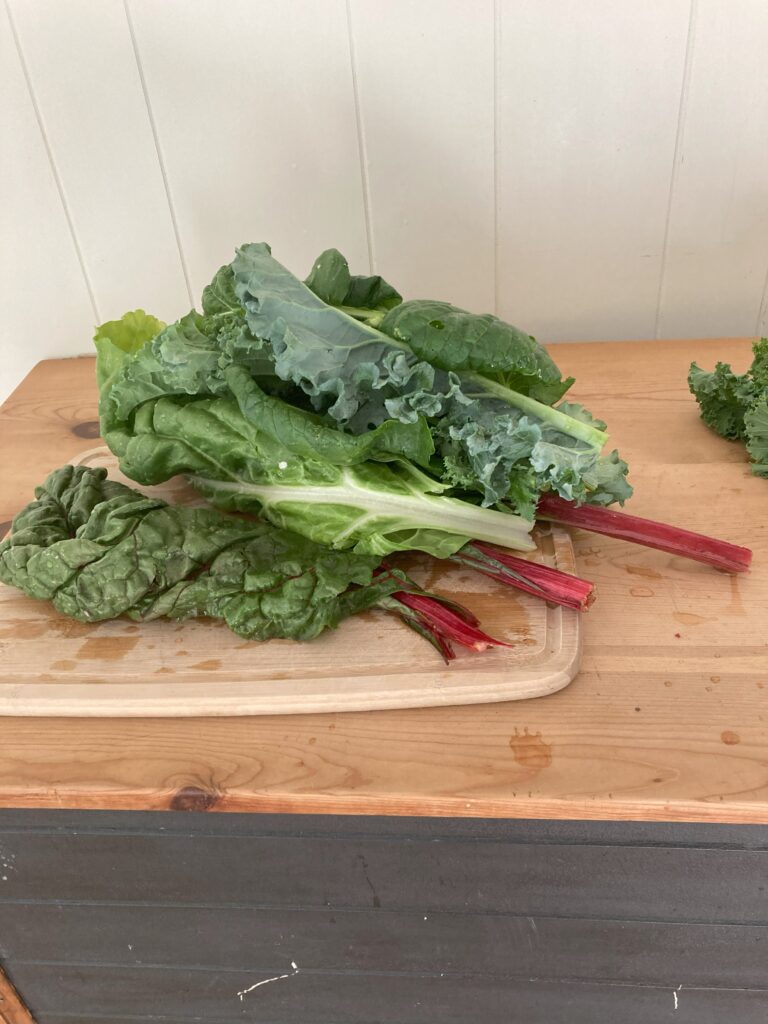
Buying Organic Supports Sustainable Land Use
Let’s start with the most significant benefit. Organic agriculture is better for the planet. Synthetic fertilizers and pesticides help plants grow fast but at the cost of soil health and the surrounding ecosystem. A focus on natural amendments ensures that water systems aren’t polluted with runoff and beneficial insects aren’t inadvertently hit with pesticides.
Synthetic fertilizers are immediately accessible to plants, making them grow quickly. Organic crops, in contrast, must rely on the nutrients within organic matter like compost or manure. These take longer to break down and be absorbed, but they offer a broader range of nutrients and build up the soil over time.
And, while organic farms are known for having yields around 10-20 percent lower than conventional, that equation changes when you switch the conversation from mono-crops to mixed-use land. The smaller scale of many organic farms allows for a greater diversity of crops planted within the same space, often leading to more food per acre.
Likewise, organic produce tends to be resilient. It is more resistant to droughts and floods, meaning it can be more reliable in a world wracked by climate change. Some studies show that organic farming outperforms conventional by up to 40 percent in cases of extreme weather.
The environmental advantages of organic farming are so profound that the UN report “Trade and Environment Review 2013: Wake Up Before It’s Too Late” determined that the only way to feed the growing world population sustainably is through small-scale organic farming.
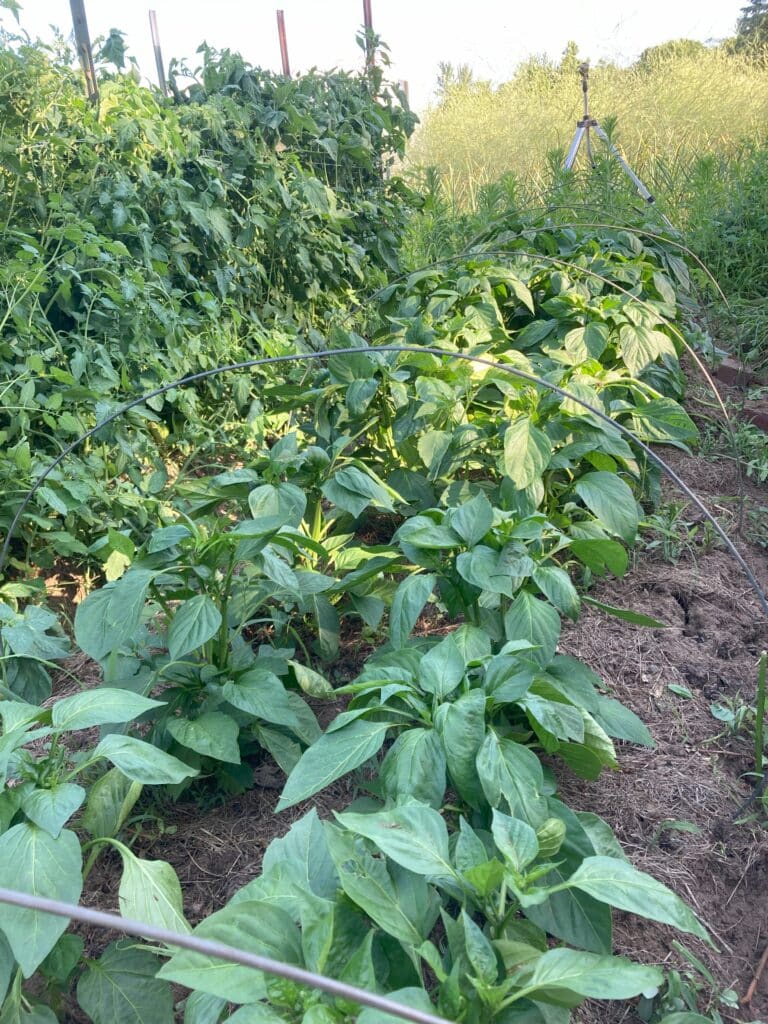
Organic Food Has Higher Nutrient Levels
“You are what you eat,” the saying goes. In truth, this should be amended. A more accurate version may be, “you are what your food eats”. Many studies show that when it comes to nutrient content, organic produce has the advantage. These increases are small to moderate and typically involve antioxidants and types of flavonoids. One study found that organic produce had antioxidant concentrations between 19 to 69 percent higher than conventional options.
Less access to nitrogen causes organic plants to grow more slowly. Still, it also means they produce more of what are known as secondary plant metabolites—compounds believed to offer human health benefits. Likewise, a study from 2008 found that organic tomatoes have twice the concentration of the flavonoid quercetin than their conventional counterparts.
The benefits are even more profound with animal products. Organically-raised livestock tend to be fed a diverse diet, meaning that the meat, eggs, and milk contain higher levels of omega-3 fatty acids than their corn-raised cousins, sometimes as high as 50% more.
Free eBook: Simple Steps to a Greener Home
Concerned about climate change? Learn actionable tips for making each room in your home greener.
"*" indicates required fields

Organic Food Has Lower Levels of Toxic Metals
Toxic metals are prevalent in today’s world, especially on our plates. These compounds build up in bodily tissues and can cause damage to your brain, lungs, kidneys, liver, and other vital organs. There’s no good way to remove them from our bodies once we ingest them, so the better option is to avoid them altogether.
Opting for organic is one way to do that. Research shows that the toxic heavy metal cadmium is much lower in organically-grown grains than conventional, likely due to a lack of synthetic fertilizers.
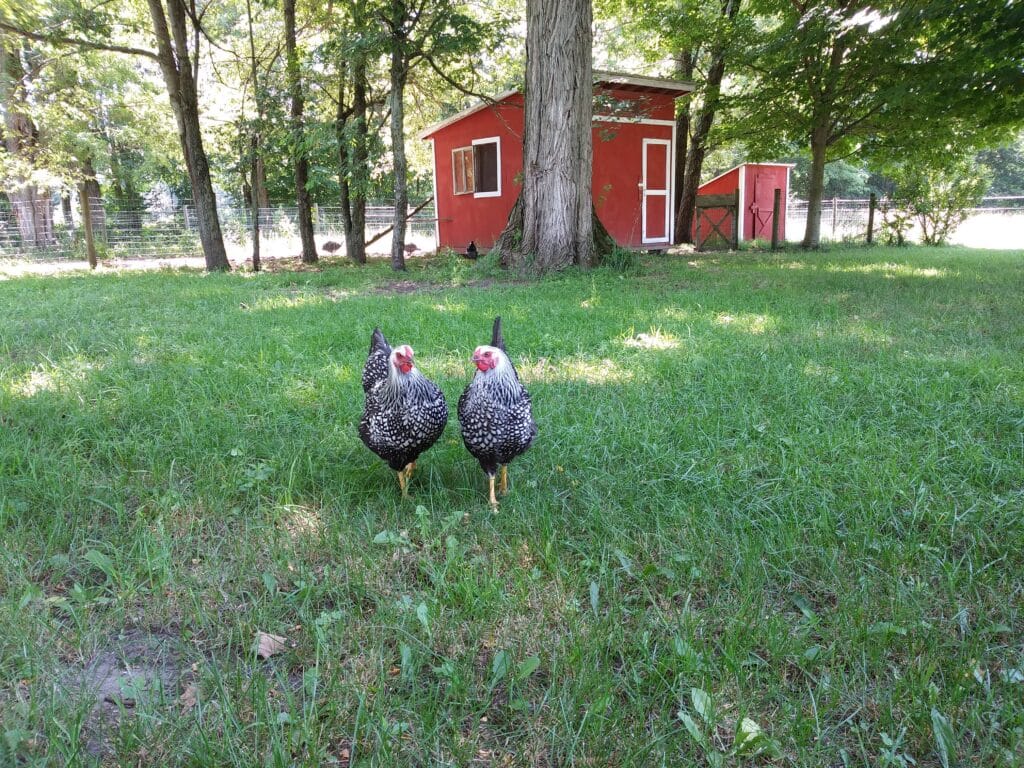
Organic Food is Easier to Buy Local (and Helps Your Community)
Small organic farms struggle to sell in large grocery stores. You’re more likely to find their produce at the farmers’ market. That’s good news, as shopping at one is a net benefit for your community. Not only does it allow organic farmers to cut out intermediaries and take home a larger portion of their profits, but it also allows customers to connect with the people growing their food.
Research shows that the economics of organic farming make sense. A 2015 meta-analysis found that organic farmers earn 22-35% more than conventional farmers. That means your food dollars stay local and support small businesses.
Organic farms offer many benefits to society beyond healthy food. Many of the farms I have worked at offer tours and volunteer days for community members to learn more about where their food comes from. In some cases, customers could help wash and prep produce on harvest days to pay a lower rate for their weekly groceries.
This kind of interaction is less possible on large conventional monocultures. Most use toxic pesticides that keep people out of fields for multiple days each month and rely on specialized equipment to complete harvesting quickly. By slowing down and growing food in a simpler, more human-powered way, more people can gain an appreciation for what they eat.
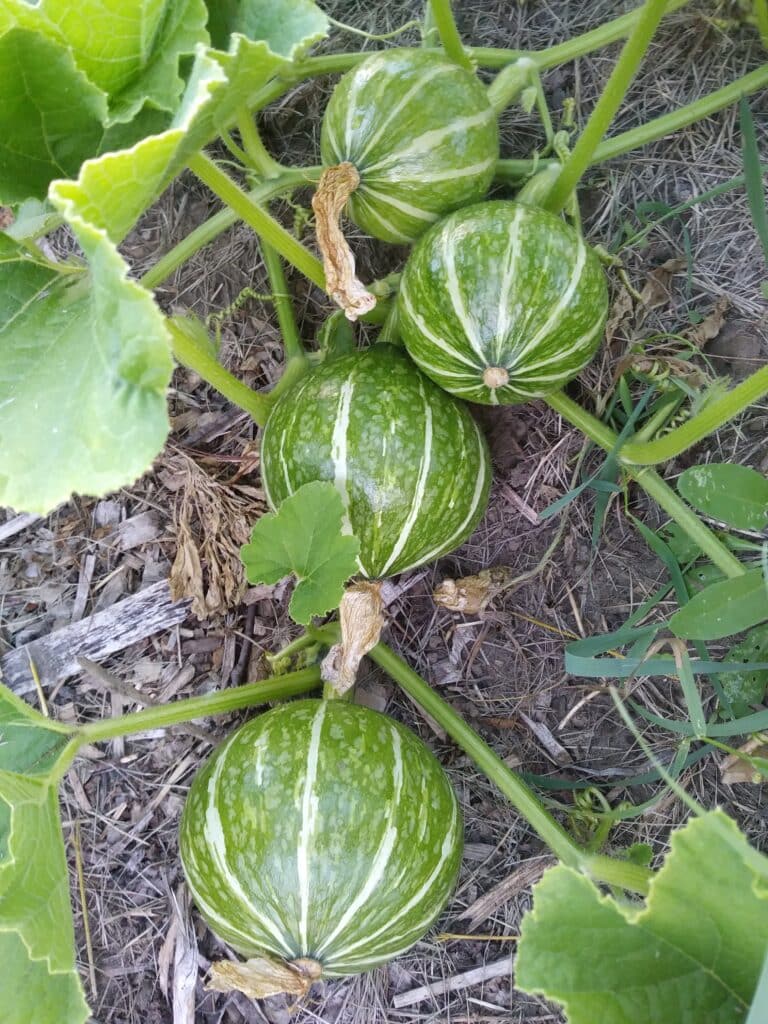
Much More Variety
Not all organic food is created equal. However, buying organic means that there is a higher likelihood that the produce was grown with more parameters in mind than how well it can survive being shipped across the country and then languishing in the grocery store. There are hundreds of incredible varieties of produce that will likely never be grown conventionally because there isn’t a straightforward way to scale up production.
Organic food has a greater chance of being local, meaning you’ll eat it closer to the harvest date. Likewise, organic farmers have more freedom to grow niche varieties of heirlooms. The flavor tends to be the highest priority with these varieties, and you’ll be shocked at how bland a store-bought tomato tastes once you take a big bite of a fresh-picked brandywine.
When I worked on a beyond-organic farm in Michigan, one of our farmers’ market bestsellers wasn’t a crop at all. Purslane is a prolific weed that is also a tasty and nutritious green. Its juicy leaves and stems are incredibly high in vitamins A and C, omega-3s, magnesium, potassium and iron. The entire plant is edible and has a refreshing lemon flavor that makes it perfect for salads and smoothies. We’d harvest it between the planting rows and sell it by the bunch. Customers were always thrilled to buy a superfood that would be impossible to find in grocery stores.
No Pesticide Residues
Our readers are concerned about glyphosate in food and for good reason.
One of the key selling points of organic produce over conventional is the lack of synthetic pesticides. Technically, all pesticides used for agriculture are approved by the FDA and considered nontoxic to humans when applied appropriately and consumed in small quantities. However, mistakes happen, and the research on the effects of these compounds is still forthcoming; there’s a lot that we still don’t know about their long-term health effects—to say nothing of their known devastating impact on surrounding ecosystems.
Exposure to pesticides is linked to many scary health conditions, from short-term headaches and nausea to long-term endocrine disruption and reproductive issues. Many are even linked to cancers like non-Hodgkin’s lymphoma and breast, ovarian, stomach, brain, testicular, prostate, and liver cancers.
You can wash your produce and minimize much of the contamination risk, but the farm workers who apply it aren’t as lucky. Pesticide exposure leads to more chemical-related injuries and illnesses for those in the agriculture field than any other part of the workforce. It’s a contributing factor to the fact that, by some reports, the average lifespan of a migrant farmworker is under 50.
Choose to buy organic, and you’re making a stand for the farm workers forced to work with potentially life-ending pesticides.
Can You Buy “Natural” Food Instead or Organic?
If you frequent farmers’ markets, you’ve likely noticed produce advertised as “naturally grown”. Is this the same as organic? Technically, no. Organic farms must go through a stringent certification process through the USDA that costs thousands upfront. It’s a large part of the reason why organic food costs more. However, some farms choose not to pay for certification even though they follow organic principles. This means buying their products might let you reap the benefits of organic farming at a lower cost.
One way to find out whether produce qualifies is by talking directly with the people growing it. Ask them what their growing strategy is, specifically if they spray. A farm that follows the tenets of organic growing will be eager to share its sustainable growing strategies.
Choose Organic When You Can—A Little Is Better Than Nothing!
While it’s well worth the cost, committing to eating organic can feel overwhelming. Don’t let that stop you from trying! You don’t have to change your entire diet to avoid everything conventional. Even spending a small percentage of your food budget on organic options (preferably locally grown ones) ensures you’re supporting this production method.
Not all produce is the same. Some has a higher likelihood of pesticide contamination than others due to how often it’s sprayed and the part of the plant you eat. If you want to make an easy change, purchase the following products—known as the dirty dozen—organic as often as possible.
- Strawberries
- Spinach
- Peaches
- Grapes
- Nectarines
- Kale, collards and mustard greens
- Apples
- Cherries
- Blueberries
Commit to finding ways to highlight organic produce on your plate, and you’ll play a part in improving our global food system.